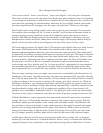
Another important concept. When you use the shelf curves the
frequencies on the panel may or may nor correspond to other EQ's
frequency markings. It seems there are accepted standards for filters
and bell curves for specifying frequency, but not shelves. We use a
common form of spec where the "freq" corresponds to the half-way
dB point. So, if you have a shelf boost of 20 db set at 100 Hz, then
at 100, it is boosting 10 dB. The full 20 dB of boost is happening
until below 30 Hz. Not only that, like every other shelf EQ there will
be a few dB of boost as high as 500 Hz or 1K. This is all normal,
except.........
Except we now have a working "bandwidth control" in shelf mode.
With the bandwidth set fully counter-clockwise, these shelves
approximate virtually ever other EQ's shelf (given that some use a
different freq spec). As you turn the bandwidth control clockwise,
everything changes and it breaks all the rules (and sounds awesome).
Lets use an example. If graphs are more your style, refer to these as
well. Suppose we use 4.7K on the third band by switching to "boost"
and "shelf" and turning the "bandwidth control" fully counter-
clockwise. Careful with levels from here on out. Just for fun, select
4.7kHz and turn the "dB" control to the max - fully clockwise. This
should be like most other shelf EQs, except with better fidelity, (if
you can set them to around 5 kHz!) . Now, slowly turn the
"bandwidth" clockwise. Near 12:00 it should be getting "special". It
also sounds higher (in freq). Keep turning. At fully clockwise it
seems to have gotten a little higher and some of the sibilance is
actually less than in "bypass". It sort of sounds as if the bandwidth
is acting like a variable frequency control but better. More air - less
harshness.
Compared to "conventional parametrics" in all their variations, the
Massive Passive has just "upped the ante" by adding a few useful
new parameters. The first is the use of the "bandwidth" in shelf
modes. Second is the ability to switch each and every band into shelf.
The original parametrics were only "bell". We have seen some EQs
that allow the lowest and highest bands to switch to shelf. Now you
can use two HF shelfs to fine tune in new ways without chaining
several boxes together. Lastly, each band can be bypassed or
switched from boost to cut without losing a knob setting. This allows
twice the resolution from the "dB" pots and allows one to exagerate
an offending note in order to nail the frequency easier, then simply
switch to "cut". You can always check, without losing the dB setting
by switching back to "boost" for a minute. You can also have
absolute confidence that the "zero" position on the dB pot is "flat"
which is not the case with center detented pots. Mechanical center
and electrical center are rarely the same.
"The Passive Parametric"
For years, we had been getting requests for a Manley parametric
equalizer, but it looked daunting because every parametric we knew
of used many op-amps and a "conventional parametric" would be
very impractical to do with tubes. Not impossible, but it might take
upwards of a dozen tubes per channel. A hybrid design using chips
for cheapness and tubes for THD was almost opposite of how
Manley Labs approaches professional audio gear and tube designs.
Could we combine the best aspects of Pultecs, old console EQs and
high end dedicated parametric EQs?
What is the definition of a "Parametric Equalizer"? We asked the
man who invented the first Parametric Equalizer and coined the
term. He shrugged his shoulders and indicated there really is no
definition and it has become just a common description for all sorts
of EQs. He presented a paper to the AES in 1971 when he was 19.
His name is George Massenburg and still manufactures some of the
best parametric EQs (GML) and still uses them daily for all of his
major recordings. Maybe he originally meant "an EQ where one
could adjust the level, frequency and Q independently". He probably
also meant continuously variable controls (as was the fashion) but
this was the first aspect to be "modified" when mastering engineers
needed reset-ability and rotary switches. The next development was
the variation of "Constant Bandwidth" as opposed to "Constant Q"
in the original circuits. "Constant Q" implies the Q or bell shape
stays the same at every setting of boost and cut. "Constant Bandwidth"
implies the Q gets wider near flat and narrower as you boost or cut
more. Pultecs and passive EQs were of the constant bandwidth type
and most console EQs and digital EQs today are the constant
bandwidth type because most of us prefer "musical" over "surgical".
Lately we have seen the word "parametric" used for EQs without
even a Q control.
We can call the Massive Passive a "passive parametric" but .... it
differs from George's concepts in a significant way. And this is
important to understand, to best use the Massive Passive. The dB
and bandwidth knobs are
not independent. We already noted that the
Q of the bell curve widens when the dB control is closer to flat. More
significantly, the boost or cut depth varies with the bandwidth
control. At the narrowest bandwidths (clockwise) you can dial in 20
dB of boost or cut. At the widest bandwidths you can only boost or
cut 6 dB (and only 2 dB in the two 22-1K bands). Somehow, this still
sounds musical and natural. The reason seems to be, simply using
basic parts in a natural way without forcing them to behave in some
idealized conceptual framework.
"Normal Shelf" Wide Bandwidth
"Special Shelf" Medium Bandwidth
"Pultec Shelf" Narrow Bandwidth
Bell Cut Narrow Bandwidth
"SPICE" printout
10


















